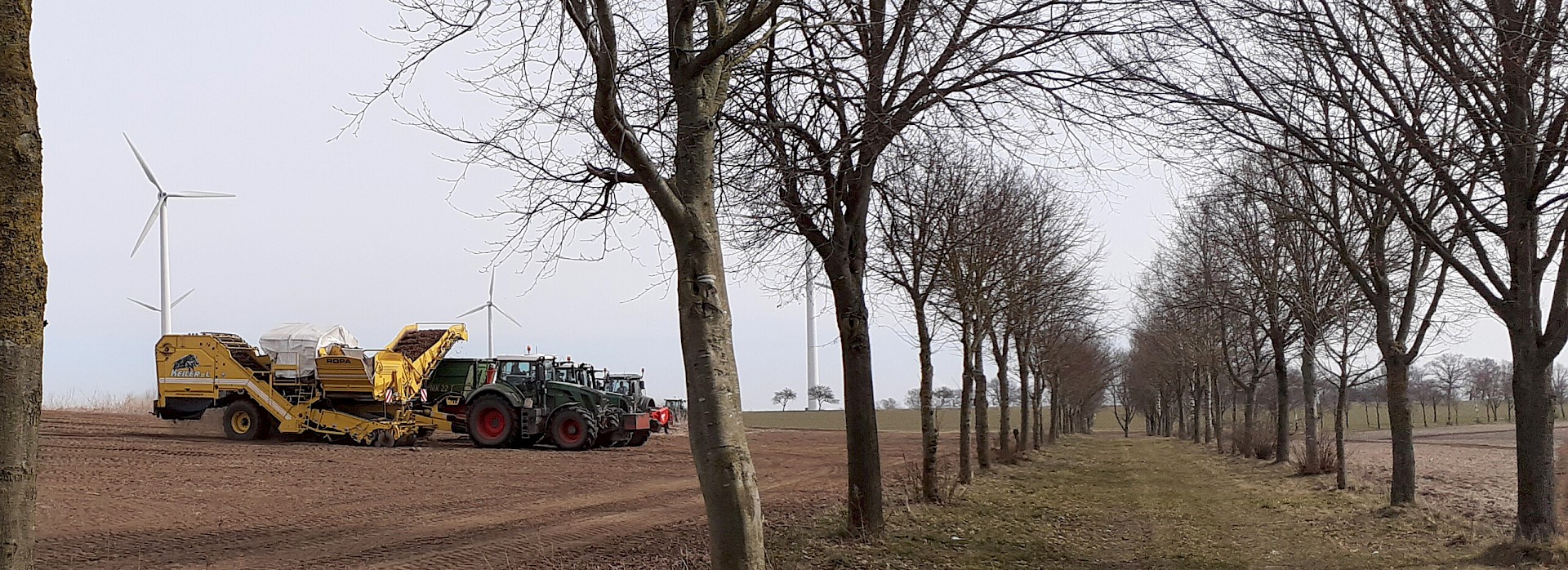At the Hans-Heinrich Grünhagen's farm, the ROPA Keiler works even in the period from February to April. In this colder time of year, it harvests another tuberous plant instead of potatoes, namely Jerusalem artichoke.
A ROPA Keiler 2 Classic has been in operation at the Grünhagen farm in northern Brandenburg since 2020. For maximum efficiency, the Keiler is equipped with an overloading bunker. At the farm, which has an area of 2,000 ha, the Keiler does not only harvest crops on the own fields of the farm, but is also used for contract work on other farms. Over the past year, it harvested 340 ha of potatoes totally. On light and well-separable soils, the Keiler 2 Classic can show its full potential. The outstanding harvesting result was one of the main reasons behind the decision to choose a ROPA potato harvester. The farm manager also praises the clear design of the harvester and the professional service support provided by the ROPA sales partner BLT and the ROPA customer service.
Jerusalem artichoke
In addition to potatoes, the farm has been growing Jerusalem artichokes for 25 years. The cultivation area covers 60 ha, making the Grünhagen farm one of the largest growers of this product in Germany.
The idea of growing this unusual for Germany tuber goes back to Grünhagen's childhood. His father cultivated Jerusalem artichokes for ethanol production. When a Jerusalem artichoke processing company approached the farm and offered cooperation, Hans Heinrich Grünhagen accepted that offer and since then a large part of the German health and pet market demands has been supplied with the tubers grown in Heiligengrabe.
Planting, hoeing, harvesting
Jerusalem artichokes are planted in spring using a normal potato planting machine. This naturally tolerant plant does not have high demands on the soil. Thus, apart from a single pass with a hoe or harrow to control weeds, no further work is required until harvesting.
For harvesting, the haulm, frozen in winter and up to 3 m high, is first shortened to a height of 20 cm with a forage harvester and then the remains are removed with a haulm topper.
The farm uses a windrower to deposit the Jerusalem artichokes, which are then harvested with a Keiler. "With an average lifting speed of 6 km/h, the daily performance of the Keiler also matches up", says Hans Heinrich Grünhagen.
The farm manager lists the water and nitrogen supply, as well as high content of stones in the fields, as the biggest challenges on his farmland. For cost reasons, the stones are neither separated nor sorted out on the harvester. An own-designed stationary stone separator is used to sort out the stones after harvesting.
Farm manager Mr. Grünhagen and his driver Mr. Wilk are thrilled with the load capacity of the Keiler. Another great advantage for both of them is the open and easily accessible design of the harvester, which reduces downtime to a minimum if any maintenance work is required.








